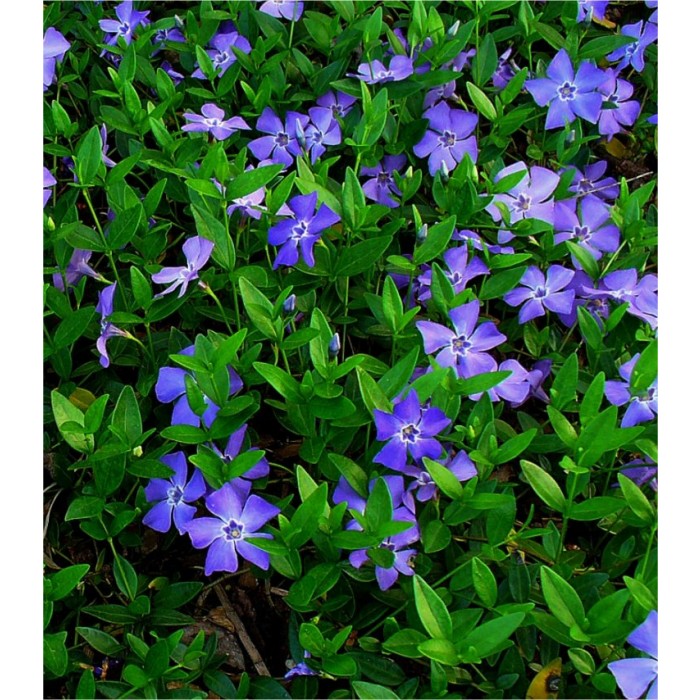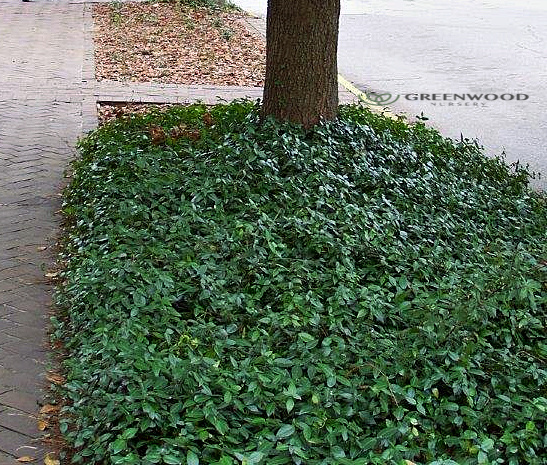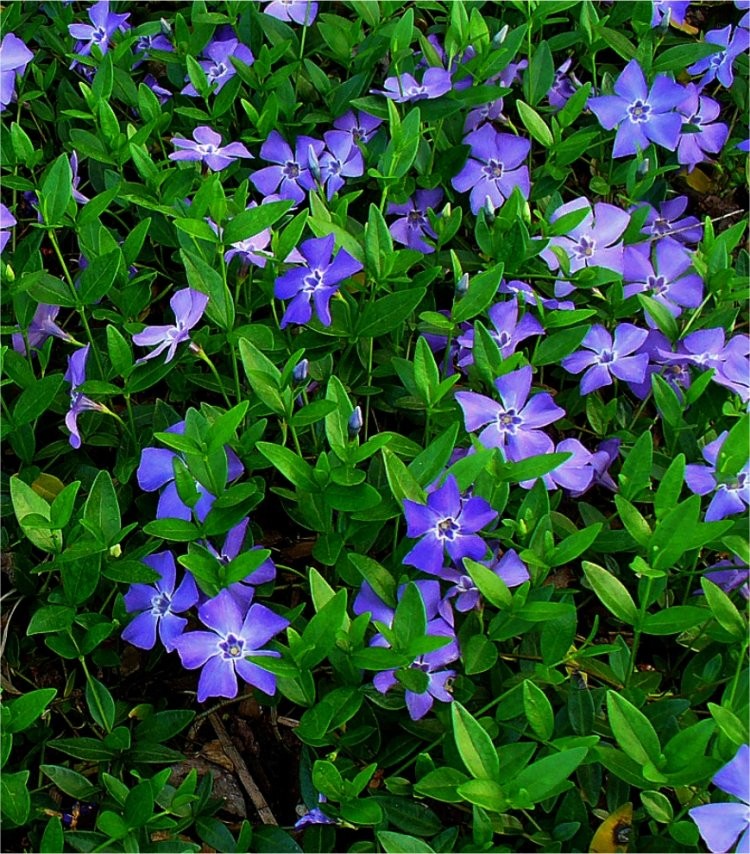Understanding the Potential Drawbacks of Vinca Minor
Vinca minor, also known as periwinkle, is a popular and attractive ground cover option for many gardeners. Its ability to thrive in a variety of conditions, including shade and poor soil, makes it a versatile choice for landscaping. However, like any plant, Vinca minor is not without its challenges. In fact, Vinca minor ground cover problems are a common concern for many gardeners. From invasive growth habits to pest and disease issues, there are several potential drawbacks to consider when growing Vinca minor.
One of the most significant Vinca minor ground cover problems is its tendency to become invasive. If not properly contained, Vinca minor can quickly spread beyond its intended boundaries, overtaking other plants and potentially causing harm to local ecosystems. Additionally, Vinca minor’s aggressive growth habit can make it difficult to maintain, requiring regular pruning and training to keep it under control.
Another common issue with Vinca minor is its susceptibility to pests and diseases. Aphids, spider mites, and root rot are just a few of the potential problems that can affect Vinca minor, causing damage to the plant and potentially spreading to other areas of the garden. Furthermore, Vinca minor’s dense growth habit can make it difficult to detect these issues early on, allowing them to spread and cause more damage.
Despite these challenges, Vinca minor remains a popular choice for many gardeners. With proper care and management, it is possible to minimize the risks associated with Vinca minor ground cover problems and enjoy the benefits of this attractive and versatile plant. In the following sections, we will explore some of the common issues associated with Vinca minor and provide tips and advice on how to overcome them.
How to Prevent Vinca Minor from Taking Over Your Garden
One of the most significant Vinca minor ground cover problems is its tendency to become invasive. If not properly contained, Vinca minor can quickly spread beyond its intended boundaries, overtaking other plants and potentially causing harm to local ecosystems. To prevent this, it’s essential to take steps to control the spread of Vinca minor.
Regular pruning is one of the most effective ways to keep Vinca minor under control. By pruning the plant regularly, you can help to maintain its shape and prevent it from spreading beyond its boundaries. It’s also essential to remove any dead or damaged leaves and stems, as these can provide a haven for pests and diseases.
Another effective way to prevent Vinca minor from taking over your garden is to use physical barriers. By installing a physical barrier, such as a plastic or metal edging, you can help to contain the plant and prevent it from spreading. This is particularly effective when used in conjunction with regular pruning.
Proper soil preparation is also crucial in preventing Vinca minor from becoming invasive. By preparing the soil properly before planting, you can help to prevent the plant from spreading too quickly. This includes adding organic matter, such as compost, to the soil to improve its fertility and drainage.
In addition to these methods, it’s also essential to monitor the plant regularly for signs of invasive growth. By keeping a close eye on the plant, you can quickly identify any problems and take steps to address them before they become more serious.
By following these tips, you can help to prevent Vinca minor from taking over your garden and minimize the risk of Vinca minor ground cover problems. Remember, prevention is key, and by taking steps to control the spread of Vinca minor, you can enjoy the benefits of this attractive and versatile plant without the drawbacks.
Dealing with Pests and Diseases that Target Vinca Minor
Vinca minor is susceptible to a range of pests and diseases that can cause significant damage to the plant. Some of the most common pests that target Vinca minor include aphids, spider mites, and mealybugs. These pests can cause damage to the plant’s leaves and stems, and can also transmit diseases.
Aphids, for example, are small, soft-bodied insects that feed on the sap of Vinca minor. They can cause curled or distorted leaves, and can also transmit plant viruses. Spider mites, on the other hand, are tiny, spider-like insects that feed on the sap of Vinca minor. They can cause yellowing or bronzing of the leaves, and can also spin webs on the plant.
In addition to pests, Vinca minor is also susceptible to a range of diseases, including root rot, leaf spot, and powdery mildew. Root rot, for example, is a fungal disease that can cause the roots of Vinca minor to rot, leading to yellowing or wilting of the leaves. Leaf spot, on the other hand, is a fungal disease that can cause small, circular lesions to form on the leaves of Vinca minor.
To manage pests and diseases on Vinca minor, it’s essential to use a combination of cultural, chemical, and biological controls. Cultural controls include practices such as pruning, watering, and fertilizing, which can help to prevent pest and disease problems. Chemical controls, such as insecticides and fungicides, can be used to control pest and disease outbreaks. Biological controls, such as introducing beneficial insects or using microorganisms to control pests and diseases, can also be effective.
Some organic control methods for pests and diseases on Vinca minor include using neem oil, insecticidal soap, and horticultural oil to control pests, and using copper-based fungicides and sulfur-based fungicides to control diseases. It’s also essential to maintain good garden hygiene, including removing weeds and debris, and disinfecting gardening tools, to prevent the spread of pests and diseases.
By understanding the common pests and diseases that target Vinca minor, and using a combination of cultural, chemical, and biological controls, gardeners can help to minimize the risk of Vinca minor ground cover problems and keep their plants healthy and thriving.
Vinca Minor and Weed Suppression: Separating Fact from Fiction
One of the claimed benefits of Vinca minor is its ability to suppress weeds. However, is this claim based on fact or fiction? To answer this question, it’s essential to understand the science behind weed suppression and how Vinca minor interacts with other plants in the garden.
Weed suppression occurs when a plant is able to outcompete weeds for resources such as light, water, and nutrients. Vinca minor, with its dense growth habit and ability to form a thick mat of foliage, is often claimed to be an effective weed suppressor. However, research suggests that this claim may be exaggerated.
Studies have shown that Vinca minor is not as effective at suppressing weeds as other ground cover plants, such as creeping thyme or sweet woodruff. In fact, Vinca minor can actually create an environment that is conducive to weed growth, particularly in areas with poor soil quality.
So, what are some alternative methods for weed control? One effective approach is to use a combination of physical and cultural controls, such as mulching, hand-weeding, and improving soil quality. Mulching, for example, can help to suppress weeds by blocking light and preventing seed germination. Hand-weeding, on the other hand, can be an effective way to remove weeds before they have a chance to spread.
Another approach is to use ground cover plants that are more effective at suppressing weeds than Vinca minor. Creeping thyme, for example, is a low-growing, spreading plant that can form a dense mat of foliage that suppresses weeds. Sweet woodruff, on the other hand, is a perennial plant that can form a thick layer of foliage that prevents weeds from growing.
In conclusion, while Vinca minor may have some weed-suppressing properties, it is not a magic bullet for weed control. By understanding the science behind weed suppression and using a combination of physical and cultural controls, gardeners can effectively manage weeds and create a healthy, thriving garden.
Managing Vinca Minor’s Aggressive Growth Habit
Vinca minor is known for its rapid growth habit, which can be both a blessing and a curse. On the one hand, its ability to quickly cover large areas can be beneficial for gardeners looking to establish a ground cover quickly. On the other hand, its aggressive growth can lead to Vinca minor ground cover problems, such as overgrowth and invasion of other plants.
To manage Vinca minor’s growth, it’s essential to prune the plant regularly. Pruning can help to control the plant’s size and shape, and can also encourage new growth and prevent the plant from becoming leggy. There are several pruning techniques that can be used to manage Vinca minor’s growth, including pinching, cutting back, and thinning.
Pinching involves removing the tips of the stems to encourage branching and prevent the plant from becoming too tall. Cutting back involves cutting the stems back to the ground to control the plant’s size and promote new growth. Thinning involves removing select stems to allow more air and light to reach the remaining stems and promote healthy growth.
In addition to pruning, training can also be used to manage Vinca minor’s growth. Training involves using supports, such as trellises or stakes, to direct the plant’s growth and keep it under control. This can be particularly useful for gardeners who want to use Vinca minor as a climber or want to keep the plant contained in a specific area.
Another technique for managing Vinca minor’s growth is to use a combination of pruning and mulching. Mulching involves applying a layer of organic material, such as wood chips or bark, to the soil to suppress weeds and retain moisture. By pruning the plant regularly and mulching around the base, gardeners can help to control Vinca minor’s growth and prevent it from becoming invasive.
By using these techniques, gardeners can effectively manage Vinca minor’s aggressive growth habit and prevent Vinca minor ground cover problems. With regular pruning, training, and mulching, gardeners can enjoy the benefits of Vinca minor without the drawbacks.
Environmental Concerns: Is Vinca Minor a Threat to Local Ecosystems?
Vinca minor, like many other non-native plants, has the potential to outcompete native species and alter ecosystems. This can lead to a range of environmental problems, including the loss of biodiversity and the disruption of delicate ecosystem balances.
One of the main concerns with Vinca minor is its ability to form dense mats of foliage that can shade out native plants and prevent them from growing. This can lead to a decline in native plant populations and a loss of biodiversity. Additionally, Vinca minor’s aggressive growth habit can lead to the displacement of native plants and the alteration of ecosystem processes.
Another concern with Vinca minor is its potential to alter soil chemistry and disrupt nutrient cycles. Vinca minor’s roots can release chemicals that can alter soil pH and nutrient availability, which can have negative impacts on native plants and microorganisms.
So, what can be done to mitigate the environmental impacts of Vinca minor? One approach is to use Vinca minor in a way that minimizes its potential to outcompete native species. This can include using Vinca minor in containers or in areas where it is unlikely to spread and cause harm.
Another approach is to choose alternative ground cover plants that are native to the local ecosystem and are less likely to cause harm. For example, plants like creeping thyme or sweet woodruff are native to many parts of North America and can provide similar benefits to Vinca minor without the environmental risks.
Finally, it’s essential to properly dispose of Vinca minor when it is no longer wanted or needed. This can include composting or properly disposing of plant material to prevent it from spreading and causing harm.
By taking these steps, gardeners can help to minimize the environmental impacts of Vinca minor and reduce the risk of Vinca minor ground cover problems.
Alternatives to Vinca Minor: Exploring Other Ground Cover Options
While Vinca minor can be a popular and attractive ground cover option, it’s not the only choice available. In fact, there are many other ground cover plants that can provide similar benefits to Vinca minor without the drawbacks. In this section, we’ll explore some alternative ground cover options that can help you avoid Vinca minor ground cover problems.
One alternative to Vinca minor is creeping thyme (Thymus serpyllum). This low-growing, spreading plant is perfect for areas with poor soil and can thrive in full sun to partial shade. Creeping thyme is also drought-tolerant and requires minimal maintenance, making it an ideal choice for busy gardeners.
Another option is sweet woodruff (Galium odoratum). This perennial plant has a sweet, vanilla-like fragrance and produces small white flowers in the spring. Sweet woodruff is a low-maintenance ground cover that can thrive in partial shade to full sun and requires minimal watering.
Phlox subulata is another alternative to Vinca minor. This low-growing, spreading plant produces pink, purple, or white flowers in the spring and has a sweet, fragrant scent. Phlox subulata is drought-tolerant and requires minimal maintenance, making it an ideal choice for areas with poor soil.
Finally, consider using sedum (Sedum spp.) as a ground cover. Sedum is a low-maintenance, drought-tolerant plant that comes in a variety of shapes and sizes. It’s perfect for areas with poor soil and can thrive in full sun to partial shade.
These alternative ground cover options can provide similar benefits to Vinca minor without the drawbacks. By choosing a ground cover that’s well-suited to your climate and soil type, you can avoid Vinca minor ground cover problems and create a beautiful, low-maintenance garden.
Conclusion: Successfully Growing Vinca Minor with Minimal Problems
In conclusion, Vinca minor can be a beautiful and attractive ground cover option, but it can also come with some challenges. By understanding the potential drawbacks of Vinca minor and taking steps to prevent them, gardeners can minimize Vinca minor ground cover problems and enjoy the benefits of this versatile plant.
Throughout this article, we’ve discussed the common issues that can arise when growing Vinca minor, including invasive growth, pests and diseases, and environmental concerns. We’ve also explored alternative ground cover options that can provide similar benefits to Vinca minor without the drawbacks.
By following the tips and advice outlined in this article, gardeners can successfully grow Vinca minor with minimal problems. Remember to prune regularly, contain the plant’s growth, and provide proper soil preparation to prevent invasive growth. Also, be aware of the potential for pests and diseases, and take steps to prevent them.
Finally, consider the environmental impact of Vinca minor and take steps to mitigate its effects. By choosing alternative ground cover options or using Vinca minor in a way that minimizes its environmental impact, gardeners can enjoy the benefits of this plant while also protecting the environment.
We hope this article has provided valuable information and insights for gardeners who are considering growing Vinca minor. By following the tips and advice outlined in this article, gardeners can minimize Vinca minor ground cover problems and enjoy the beauty and benefits of this versatile plant.







